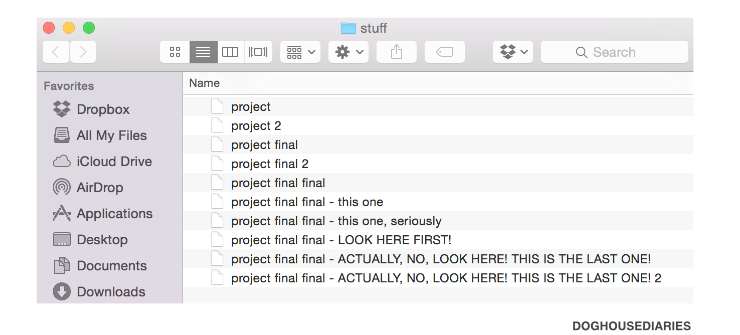I have worked in teams before. In a prior internship, I worked in a team alongside other students, under the supervision of a design professor. Most of my communication emails with the other students were about which graphics we were doing and sharing updates.
At AIR, it was different. Yes, the emails covered the same topics, but there was greater urgency behind it. At my previous internship, there was a general sense if anything went wrong, the professor would pitch in and help fix things. But my supervisor had no design skills or expertise. So if anything went wrong, it was up to the design team and I to figure it out.
-
Reaching Deadlines
During the initial design stages, my team was asked to come up with a layout by the end of the day. However, both a fellow intern and I felt that coming up with a layout, when the infographics were still unfinished, was impossible. At the time, we were unsure how big each infographic would end up being, and wanted to avoid making drastic changes later down the line. After we told this to our co-worker, Arthur, he assured us to just focus on getting the infographics finished while he brainstormed a handbook layout.
This was a bad idea. We were only in the office for six hours, so I underestimated how much time it would take to finish the infographics. In retrospect, there were two actions I could have taken: put the infographics on hold and focus on the layout, or tell my supervisor what our dilemma was and figure out the best course of action. When my supervisor found out, she was upset, and told us that we could have communicated with her earlier in the day if things were going wrong.
Since then, I have been more communicative of the time it would to finish a task. Now, when my supervisor asks to make changes, I tell her if that would take more time. Or if I needed more content before I can get started on a design.
2. File Versions

Another issue was file versions. We were all working from a Google Drive folder and were constantly uploading files to it. However, a big mistake was not properly labelling the updated files.
At one point, we were working on the handbook and uploaded it to Google Drive. The next day, I asked the college assistant which handbook version I should work on, and he shared the link with me. Upon opening the file however, I noticed some of the changes I made over the past few days were missing. I asked him the college assistant if it was an outdated file, and he admitted he wasn’t sure.
I realized the college assistant had a bad habit of improperly naming his files. Like in the picture above, he would often append some variation of “final” to his filenames. For most of the internship, I didn’t raise the issue as I figured I could just check the file update time to check for the latest version.
But this method wasn’t very effective when someone worked on an older version and then upload it to the Drive, replacing the changes another team member had made. It was something I had to tell him, and from now on, we agreed on a naming convention of date and time.




